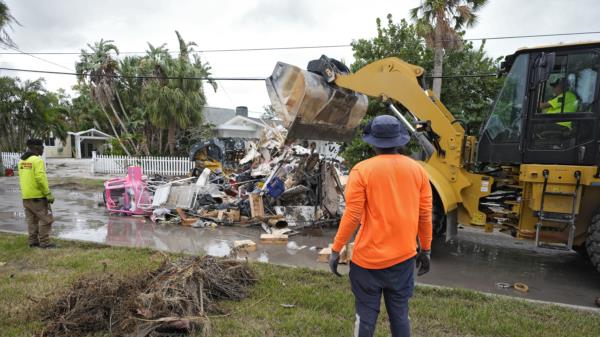
As Hurricane Milton approaches the Florida coast, forecasters are urging residents to remain vigilant and prepare for possible last-minute shifts in the storm's track. These sudden changes, known as 'wobbles,' can have significant impacts on the areas at risk.
Factors such as interaction with land and atmospheric conditions can cause a hurricane to deviate from its projected path unexpectedly. The National Hurricane Center has highlighted the uncertainty in predicting the exact landfall location, with track forecasts potentially off by an average of 60 to 70 nautical miles.
It is crucial for residents to focus on the cone of uncertainty rather than just the projected landfall point. The cone represents the probable track of the hurricane's center around 60 to 70% of the time, providing a broader perspective on potential impacts.



The current forecast indicates that Hurricane Milton is likely to make landfall just north of Sarasota on Wednesday night, with its center passing south of Tampa. This trajectory poses a significant threat to the Tampa Bay area, with the potential for heavy rainfall, strong winds, and near-record storm surge levels.
However, even a slight shift in the landfall location within the cone of uncertainty could result in a worst-case scenario for the region, including catastrophic storm surge. A southward wobble in the track, while still within the cone, could lead to higher-than-expected storm surge levels in areas like Fort Myers.
Residents are advised to stay informed about updates from the National Hurricane Center and local authorities, and to take necessary precautions to ensure their safety in the face of potential wobbles in Hurricane Milton's track.







